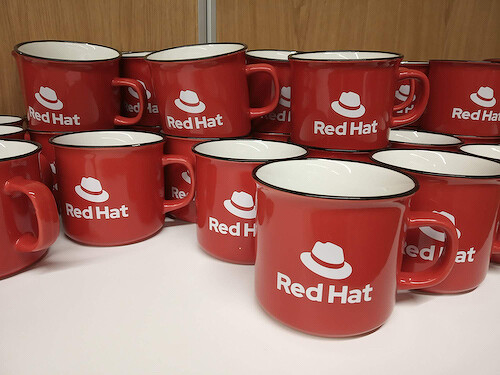Код Red Hat Enterprise Linux изъяли из свободного доступа. Топ-менеджер компании рассказал, почему
Код RHEL больше не распространяется в свободном доступе – он по-прежнему открыт, но получить его можно только за деньги. Это вызвало гнев у сообщества СПО, но Red Hat ничего не нарушила – все в рамках лицензии GPL. В компании утверждают, что сделали это потому, что разработка RHEL требует огромных ресурсов, а создатели сторонних дистрибутивов просто пересобирают RHEL с минимальными изменениями, то есть присваивают чужую работу. В компании утверждают, что остаются адептами СПО.
RHEL не для всех
Компания Red Hat, которую с большой переплатой купила IBM, изменила правила распространения исходного кода своего Linux-дистрибутива для корпораций – RHEL (Red Hat Enterprise Linux). Фактически, публичный доступ к нему теперь почти полностью закрыт – новая политика компании гласит, кто теперь она публикует исключительно код дистрибутива Cent OS Stream. Топ-менеджеры компании заявили, что сделали это, чтобы разработчики других дистрибутивов не копировали их идеи, и что при всем этом они по-прежнему остаются адептами свободного программного обеспечения (СПО).
Отныне Red Hat больше не публикует srpm-пакеты RHEL в репозитории git.centos.org, что вызвало очень негативную реакцию пользователей. Это второе за последние годы непопулярное решение руководства компании, касающееся ее продуктов – первое было принято в конце 2020 г., когда Red Hat внезапно прекратила поддержку Cent OS и переключилась на развитие упомянутой Cent OS Stream.
Cent OS Stream – это своего рода тестовый полигон, бесконечная бета-версия RHEL – на ней разработчики обкатывают все те новшества, которые планируют добавить в свой основной дистрибутив. А все пользователи этой ОС – бета-тестеры поневоле, и все дополняется еще и тем, что разработчики не гарантируют стабильную работу Cent OS Stream после установки очередного обновления.
Есть деньги? Будет и код
Исходный код RHEL, вернее, srpm-пакеты, по-прежнему будут выкладываться в интернете, но на ресурсе с ограниченным доступом. Это Red Hat Customer Portal, предназначенный исключительно для клиентов Red Hat, то есть для тех, кто платит компании деньги.
Новшества Red Hat угрожают развитию сразу нескольких дистрибутивов Linux, которые разрабатываются в качестве наследников убиенной Cent OS и альтернативы нелюбимой пользователями Cent OS Stream. В первую очередь это бесплатный AlmaLinux – как сообщал CNews, его создает компания Cloudlinux, и первая его сборка вышла I квартале 2021 г.
С тем, во что Red Hat превратила Cent OS, не смог смириться и основатель этой ОС – Грегори Курцер (Gregory Kurtzer). В феврале 2021 г. он открыл стартап Ctrl IQ для разработки системы Rocky Linux на замену Cent OS.
Теперь же оба дальнейшее развитие обоих этих проектов под вопросом – их авторам отныне доступен только код не самой стабильной Cent OS Stream, а к коду RHEL их бесплатно больше не подпустят. Также, в отличие от оригинальной Cent OS, новая Cent OS Stream не имеет бинарной совместимости с RHEL, что будет вызывать трудности при разработке патчей.
Засудить Red Hat не удастся
Поступок Red Hat мог бы обернуться для нее судебными исками за нарушение лицензии GPL, под которой распространяются продукты с открытым исходным кодом. Но к судебным тяжбам ей, вероятно, готовиться не придется ввиду отсутствия нарушений – код по-прежнему открыт, хотя и доступен только платным клиентам компании. Однако прекращение договора между компанией и клиентом влечет для последнего лишение доступа к коду операционки.
О том, что Red Hat чтит все условия GPL, сообщил вице-президент компании Майк МакГрет (Mike McGrath), решивший прокомментировать ситуацию на фоне растущего недовольства пользователей. Он подчеркнул, что компания по-прежнему остается адептом свободного ПО и добавил, что в Cent OS Stream доступны те же пакеты, что находятся в составе RHEL. О том, что в версии для этой ОС об их стабильности говорить не приходится, он упоминать не стал.
По словам МакГрета, Red Hat ограничила доступ к коду RHEL потому, что не намерена облегчать труд авторам сторонних дистрибутивов. Если им нужны наработки Red Hat, пусть пользуются тем, что предлагает Cent OS Stream, пусть даже новые ее пакеты не всегда совпадают с пакетами для RHEL. Он также добавил, что Red Hat тратит немало ресурсов на развитие RHEL во всех его проявлениях, в том числе и на сопровождение пакетов: «В Red Hat тысячи людей тратят свое время на написание кода, чтобы включить новые функции, исправить ошибки, интегрировать различные пакеты, а затем поддерживать эту работу в течение длительного времени» (At Red Hat, thousands of people spend their time writing code to enable new features, fixing bugs, integrating different packages and then supporting that work for a long time).
МакГрет добавил, что разработчики альтернативных сборок RHEL если и вносят свои изменения, то незначительные и не всегда. Такой подход, по его мнению, вредит всему сообществу Open Source.
I’m done with Red Hat (Enterprise Linux)
Two years ago, Red Hat killed CentOS, a widely-used free version of their Enterprise Linux distribution.
The community of CentOS users—myself included—were labeled as ‘freeloaders’, using the work of the almighty Red Hat corporation, without contributing anything back. Don’t mind all the open source developers, Linux kernel contributors, and software devs who used CentOS for testing and building their software. Also ignore the fact that Red Hat builds their product on top of Linux, which they didn’t build and don’t own.
Update: I had forgotten about this, but Red Hat had, in fact, promised to keep the git sources open following the CentOS move in 2020. See LearnLinuxTV’s post for more on that. This change is also causing considerable grief downstream for distros like SDL/PUIAS (a RHEL downstream that’s been maintained since before even CentOS existed)—but they are collateral damage at this point.
I almost wrote off Red Hat back then. It felt like someone stuck a knife in my back.
This past week, Red Hat took that knife and twisted it hard, when they published this blog post. Let there be no mistake: this was meant to destroy the distributions the community built to replace what Red Hat took away.
There were only two things that kept me around after Red Hat betrayed us the first time: First, instead of attacking the community of open source users, many Red Hatters reached out and asked, «How can we do better?» It didn’t heal the wound, but it meant something, knowing someone at Red Hat would at least listen.
Second—and more importantly—Rocky Linux and AlmaLinux stepped in. They prevented a mass-exodus from the Red Hat ecosystem, giving developers like me a stable target for my open source work. But Rocky and Alma relied on Red Hat sharing their source code.
Here’s how it used to work:
- Red Hat would grab a copy of Linux
- They would add magic sauce that makes it Red Hat Enterprise Linux
- They would release a new version
- They would update a source code repository with all the data required to build it from scratch
That’s kinda the status quo because in open source, the source. is open! And it doesn’t matter if someone who uses your source benefits from it too. that’s kind of what it’s all about! We all benefit from sharing our work, and in this case, the GPL license Linux uses legally requires us to share it!
Without that sharing, there would be no Debian, Arch, Mint, Ubuntu, PopOS, Fedora. or any of the other hundreds of Linux distros that build on each other and prop up the community.
But Red Hat decided to put the source code behind a paywall. Now, this is legal. Technically, the GPL allows it. But it’s generally rude and annoying to do that when the code you’re locking down is largely based on other people’s open source code.
But. it’s within their rights, so I won’t argue that point. What I will argue is the current subscription agreement, which might not be legal. Red Hat currently says they can cancel any user’s account if they download the source code and redistribute it.
Let’s say someone downloads the source through a Red Hat subscription, and uses that to build a new version of Rocky Linux. If Red Hat retailiated by cancelling that subscription, I’d definitely tune into that court case.
I don’t know if the community could front the money to take on IBM’s powerful laywers—maybe that’s what Red Hat’s banking on. But there’s another player in this game who might, and that’s Oracle. Wouldn’t it be ironic if Oracle were the ones who knocked Red Hat down a peg for being so uppity with their abuse of their community!
But let me be clear: everything I’ve seen points to Red Hat trying to choke out downstream distros like Rocky, Alma, and Oracle Linux. I think their hope is users of those distros would get scared and sign up for a Red Hat subscription. They need this to happen to lock in some short-term profits to please their IBM overlords. That’s my cynical take on it.
What Red Hat’s doing is skirting right on the edge of legality the terms of Linux’s GPL License. If you wanna dig into that, read this post from the Software Freedom Conservancy.
Red Hat used to be the company of rebels. They used to have edgy ads quoting Gandhi and positioning Red Hat as the plucky underdog, using open source to upend the old proprietary software companies.
It’s funny they used to be so devoted to that Gandhi quote in particular. In one sense, Red Hat kinda won, they’re the default choice for running Linux in big companies.
The irony is that Cory Doctorow recently wrote this about a different company, but I think it applies here:
HERE IS HOW platforms die: First, they are good to their users; then they abuse their users to make things better for their business customers; finally, they abuse those business customers to claw back all the value for themselves. Then, they die.
They built up so much goodwill in the open source community through the years and used to be known as the ‘open source company.’
But they’re throwing away that goodwill—at least as far as Linux is concerned—all in the name of profit.
Developers like me, maintainers of the EPEL repository, Fedora maintainers who are rightfully worried about the long-term impacts.
We’re all being told to go sign up for a Red Hat Developer Account so we can snag our 16 licenses[^1] of Red Hat Enterprise Linux for testing.
Thanks, I guess I’ll drop doing something actually productive and spend a week retooling my test infrastructure and automation to work with Red Hat licensing.
You know who doesn’t require me to do that?
Debian. Ubuntu. FreeBSD. Not even Rocky Linux!
And please tell your employees to stop patronizing me, saying I should just use CentOS Stream. There’s a reason Rocky and Alma linux have been downloaded millions of times. Stream is not a substitute for CentOS.
So I’ve dropped support for Enterprise Linux on all my work, effective last Friday.
And people are asking me about Ansible. That’s the Red Hat Ansible Automation Platform (by IBM), by the way.
I don’t think Ansible’s gonna try locking down access, but the fact I have to spend even a second considering that possibility is insane!
Who wants to build around an ecosystem where the open source users are called freeloaders and where massive disruptions are implemented in the middle of a release cycle, two times in a row, with no warning?
I don’t see this helping Red Hat in any way in the long term.
In the end, this is just sad:
- It’s sad for users like me who used CentOS and developed tools on it that on-ramped folks into Red Hat’s ecosystem.
- It’s sad for Red Hat, which used to fight for open source, but now puts up barriers around their own source code.
- It’s sad for everyone still in their ecosystem, because they’re now forced to deal with Red Hat’s licensing shenanigans and the loss of so many in the open source community.
Rocky Linux and AlmaLinux both announced they’ll find a way forward. I hope they can, if nothing else so people who stuck with Red Hat don’t get burned again.
But as for me? I’m done with Red Hat Enterprise Linux.
I’ll keep up support for Rocky Linux and AlmaLinux on a best-effort basis, but I have no confidence I’ll be able to support Enterprise Linux moving forward.
Fool me once, shame on you. Fool me twice.
[^1] Red Hat seemed to be upping the limit to 240 sockets per developer, but now it seems that was just a bug.



